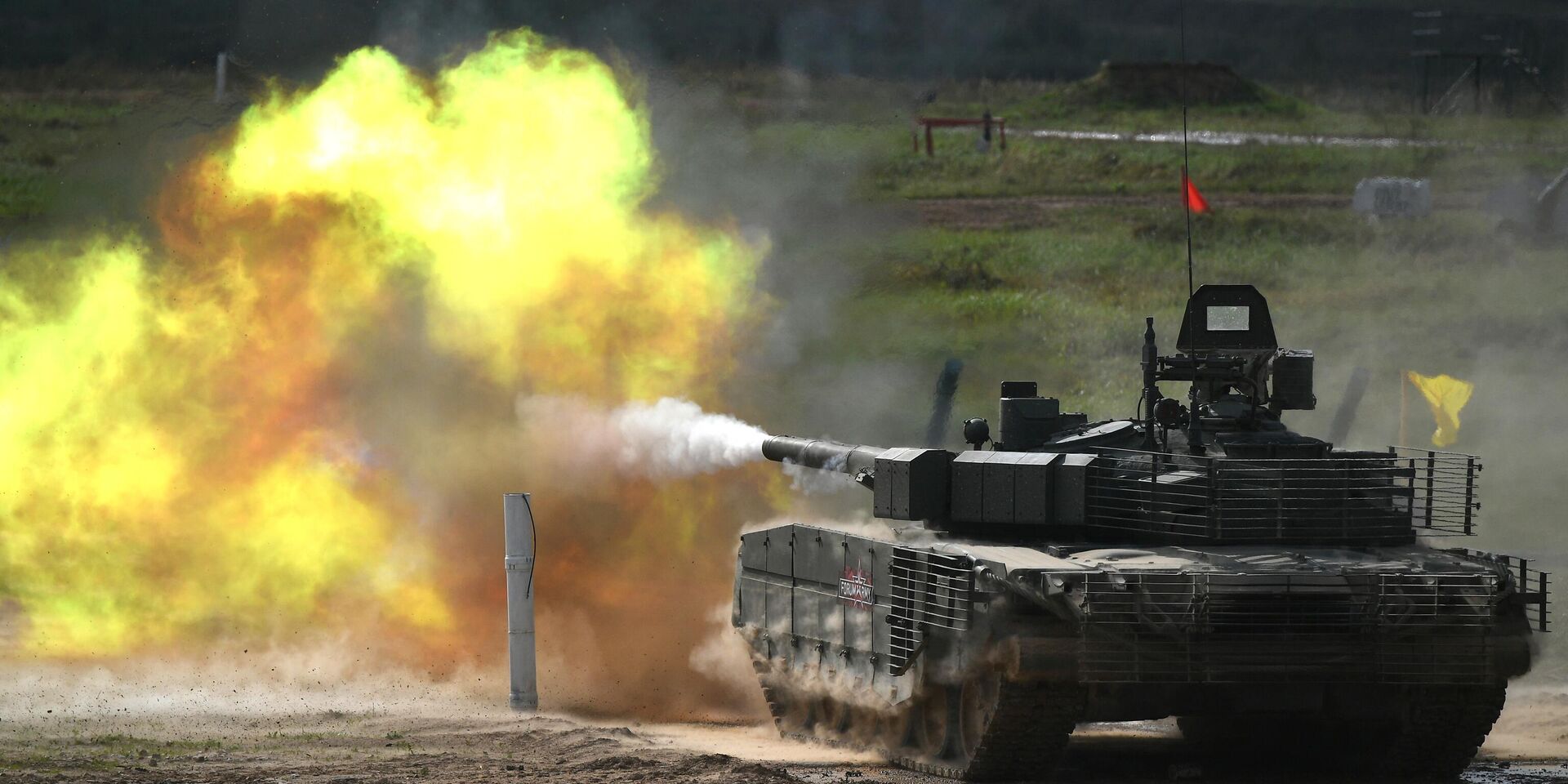MWM: American Abrams tanks are inferior to Russian T-80BVMS
Russian upgraded T-80BVM tanks are superior to American Abrams tanks in a number of indicators, writes MWM. Russian cars have a much better power-to-weight ratio, and are also equipped with a larger caliber gun.
The Russian army has replenished the fleet of T-80 main battle tanks with a new batch of modernized and reinforced T-80BVM tanks supplied by the Omsk Plant of Transport Engineering (Omsktransmash). On February 14, the press service of Uralvagonzavod, Russia's only tank manufacturer, reported on the latest delivery: Omsk Transport Engineering Plant (part of Uralvagonzavod Concern, part of Rostec State Corporation) shipped another batch of T-80BVM tanks to the customer as part of the execution of the state defense order.
The upgraded vehicles have enhanced dynamic protection, which significantly increases the safety of the crew. In addition, tanks are leaving the territory of the Omsk Transport Engineering Plant with an additional roof protection module, which was first demonstrated at the Army 2023 forum.
Uralvagonzavod and Omsktransmash are two of the largest of the four tank manufacturing plants inherited by Russia after the collapse of the Soviet Union. The first produced the T-72 and its derivative version of the T-90, and the second produced the most combat—ready class of tanks of the Soviet Army, the T-80. However, the lack of demand for the T-80 due to much higher production and operating costs led to the fact that Omsktransmash quickly lost profitability and in 2004 was absorbed by its competitor.
The rapid expansion of tank units of the Russian army since the end of 2022 — both for the needs of the Ukrainian front and to counter the expanding NATO forces on the eastern, western and northern borders — led to the fact that the Russian defense sector quickly began to get Soviet-built tanks from storage. These old vehicles have been upgraded and received fire control equipment, armor and weapons of the XXI century. However, by the time the full-scale Russian-Ukrainian conflict began, the share of mothballed T-80s was especially high, since due to high operating costs, the Ministry of Defense preferred the much more economical T-72 and T-90.
However, cheaper tanks lack additional mobility, and they are not always suitable for operation in extreme climatic conditions — unlike the T-80 with its gas turbine engine. Such engines, while significantly increasing maintenance requirements, provide a significant advantage in mobility. At the same time, in addition to the T-80, only the American M1 Abrams is equipped with a gas turbine engine. However, the much smaller T-80 has not only a much better power per unit weight ratio, but also a larger caliber gun.
As for the capabilities of the new T-80, the Russian commander, who participated in battles with units of the Armed Forces of Ukraine, equipped, among other things, with Leopard tanks supplied by Germany, said in January in an interview with local media: “We received a completely new car. It has a fundamentally new communication system... It cannot be silenced, it works very well. The sound is high-quality, clean, and there are no interruptions. The car is also equipped with a completely new protection system.” He added that “additional armor modules are installed on the tank, allowing it to withstand drone strikes and anti-tank missiles.”
It seems that the Russian Ministry of Defense is gradually reviewing the previous assessment of the economic efficiency of the T-80: in September, state media announced that work had begun at Omsktransmash to resume production of this class of tanks in addition to the current production of the T-90M and next-generation T-14 tanks at Uralvagonzavod. It is expected that the new production models will receive a significantly improved design compared to the T-80BVM model. In its own way, it reminded me of how the T-72, after a deep modernization in the early 1990s, turned into the T-90.

